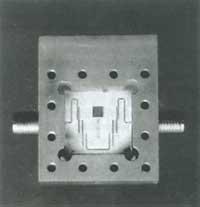Superconductivity will be demonstrated in space
1992/11/01 Elhuyar Zientzia Iturria: Elhuyar aldizkaria
The latest generation of high-temperature superconductors was discovered six years ago. Devices with these materials are now being prepared to test in space.
The US Naval Research Laboratory (NRL) will conduct two spatial tests on high-temperature superconductors, one in 1993 and one in 1996. The goal is to reduce the time between basic research and application systems.

The cost of testing will be 20 and 25 million dollars, respectively. The first satellite will transport fifteen devices. Most of these devices are filters to select the frequencies of the microwaves that arrive next to the radio waves.
According to researchers, the use of high-temperature materials will improve performance and reduce energy losses. This will improve the characteristics of computers, antennas and other systems.
The first idea of this research emerged in 1989. The NRL wanted to know the characteristics of a filter based on high temperature superconductors. The only conditions were that the size was smaller than normal and could be reproduced, specifically five copies were desired.
Mr. James Ritter, head of the NRL program, said that “we saw it as a huge challenge for the industry.” At that time, Earth laboratories were immersed in a study on superconductive materials, so more than 35 entities presented their intention to participate in the NRL project. Finally, with the exception of two of the 15 devices, the rest were thin layer superconductors of itrio-bio-copper oxide supported on different types of bases.
The first test will analyze the effect of spatial radiation on each device. A cooling system will maintain an operating temperature between 70K and 75K. The goal of the second trial is much richer, testing systems using superconductors.

Gai honi buruzko eduki gehiago
Elhuyarrek garatutako teknologia



